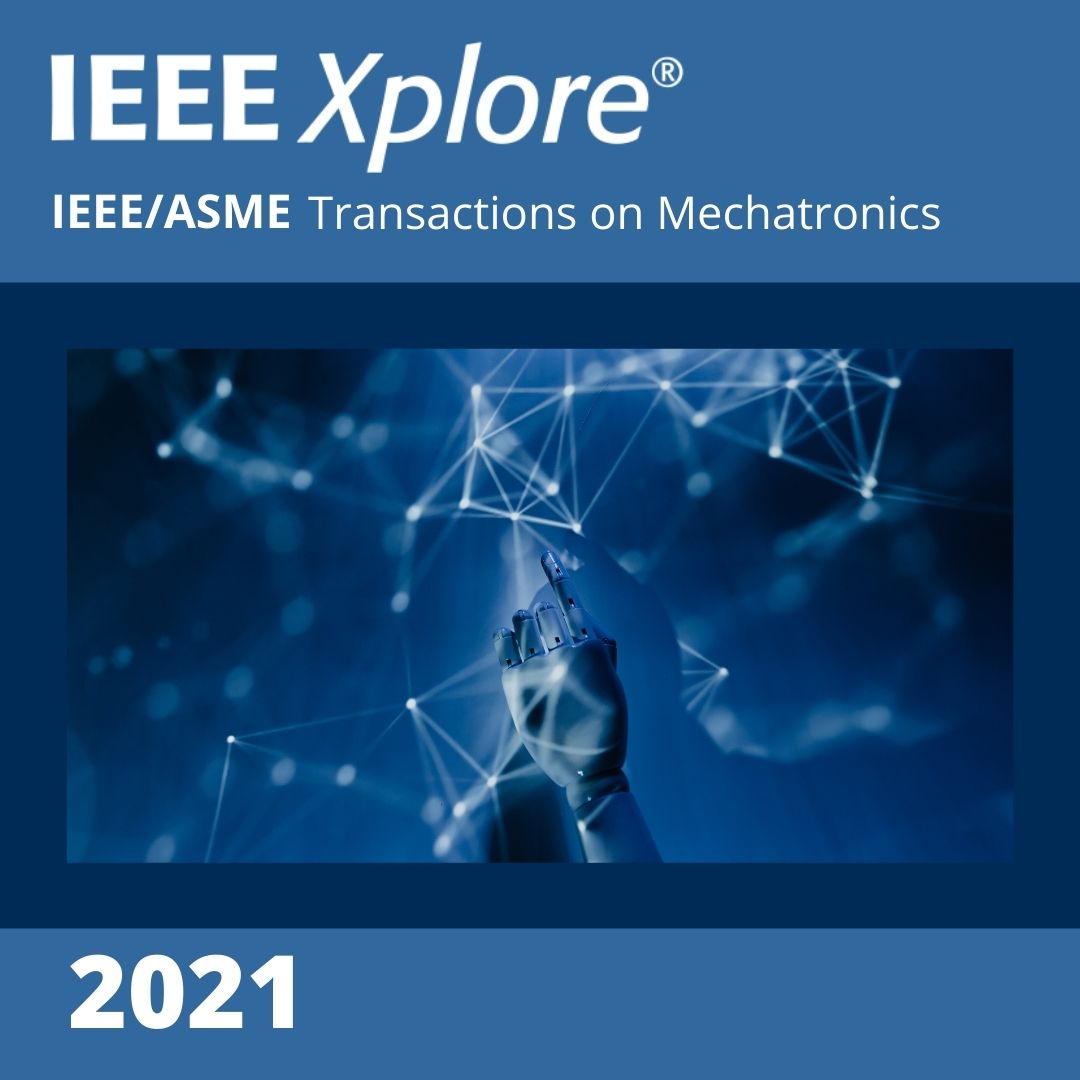采用自适应夹持方法的视网膜显微手术机器人显微钳
IF 7.3
1区 工程技术
Q1 AUTOMATION & CONTROL SYSTEMS
引用次数: 0
摘要
视网膜外膜剥离手术要求外科医生对眼睛狭窄空间内的脆弱组织进行精确的手术,这被认为是技术要求最高的手术之一。利用手术机器人辅助外科医生进行手术是公认的发展方向。自动微钳作为一种安装在机械臂末端,直接与受检部位接触的装置,一直是众多学者研究的课题。然而,目前的研究在传感器的标定算法和微镊的控制方法上都存在明显的不足。在本文中,我们介绍了一种用于视网膜前膜剥离的自动显微镊。尽管其紧凑的径向尺寸只有20毫米,但微钳的颚部具有以下两个自由度(DOF): 1)旋转和2)闭合。随后,我们分析了3-DOF力传感器集成到微钳后物理模型的变化,并针对我们设计的自动化微钳提出了一种精细化的校准算法。此外,我们还介绍了一种适用于各种未知厚度薄膜的基于力的自适应夹紧方法。聚对苯二甲酸乙二醇酯(PET)薄膜实验和推广实验均证明了自适应夹紧方法的稳定性和可推广性。本文章由计算机程序翻译,如有差异,请以英文原文为准。
A Robotic Microforceps for Retinal Microsurgery With Adaptive Clamping Method
Epiretinal membrane peel surgery requires the surgeon to perform precise operation on delicate tissue within the narrow space of the eye, which is considered as one of the most technically demanding procedures. Using surgical robots to assist surgeons in performing operations is a recognized development direction. The automatic microforceps, as a device mounted at the end of the robotic arm and directly in contact with the affected area, has been the subject of research by many scholars. However, current research has significant shortcomings in both the calibration algorithms for the sensors and the control methods for the microforceps. In this article, we introduce an automated microforceps designed for epiretinal membrane peeling procedures. Despite its compact radial dimension of just 20 mm, the jaw of the microforceps possesses the following two degrees of freedom (DOF): 1) rotation and 2) closure. Subsequently, we analyzed the changes in the physical model of the 3-DOF force sensor after its integration into the microforceps, leading us to propose a refined calibration algorithm tailored for our designed automated microforceps. Furthermore, we introduced a force-based adaptive clamping method suitable for variety of unknown thickness films. Both polyethylene terephthalate (PET) film experiments and generalization experiments demonstrated the stability and generalizability of the adaptive clamping method.
求助全文
通过发布文献求助,成功后即可免费获取论文全文。
去求助
来源期刊

IEEE/ASME Transactions on Mechatronics
工程技术-工程:电子与电气
CiteScore
11.60
自引率
18.80%
发文量
527
审稿时长
7.8 months
期刊介绍:
IEEE/ASME Transactions on Mechatronics publishes high quality technical papers on technological advances in mechatronics. A primary purpose of the IEEE/ASME Transactions on Mechatronics is to have an archival publication which encompasses both theory and practice. Papers published in the IEEE/ASME Transactions on Mechatronics disclose significant new knowledge needed to implement intelligent mechatronics systems, from analysis and design through simulation and hardware and software implementation. The Transactions also contains a letters section dedicated to rapid publication of short correspondence items concerning new research results.
 求助内容:
求助内容: 应助结果提醒方式:
应助结果提醒方式:


